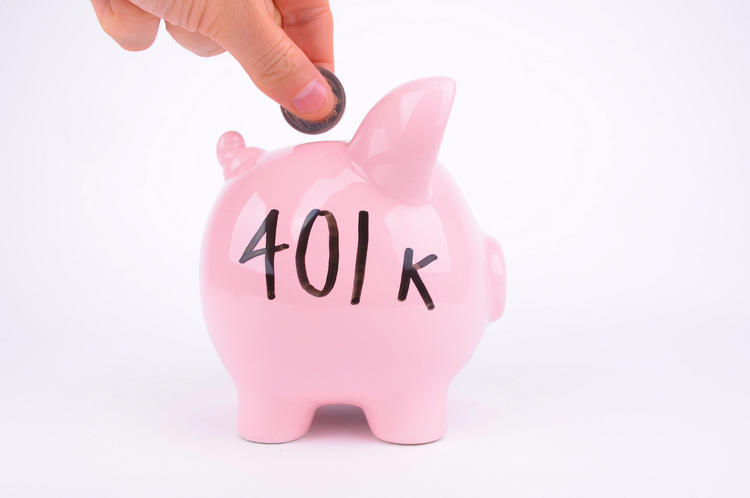What Is a Profit-Sharing Plan?
It is important for Procter & Gamble employees to understand what a profit-sharing plan is in the event your employer adopts this contribution method. A profit-sharing plan is a type of qualified defined contribution plan in which the employer contributes to the accounts of participating Procter & Gamble employees. As the name implies, employer contributions are generally (but not necessarily) tied to the business's profits, allowing employees to 'share' in those profits. Annual contributions to the plan may be discretionary (you need not contribute anything at all), or may be based on a specific formula relating to annual profits.
Like other types of qualified plans, the purpose of a profit-sharing plan is to help fund your Procter & Gamble employees' retirement. By offering such a plan, Procter & Gamble may be able to attract quality employees and reduce their employee turnover rate. Unlike some other types of qualified plans, however, a pure profit-sharing plan is generally employer-funded. Participating employees generally cannot choose to defer a portion of their pre-tax compensation to the plan (although after-tax employee contributions may be permitted, as discussed below).
Tip: The term 'profit-sharing plan' actually describes a broad category that includes several specific types of qualified retirement plans. Employee stock ownership plans and stock bonus plans, 401(k) plans, age-weighted profit-sharing plans, and new comparability plans are all considered profit-sharing plans, although each has its own unique features.
Discretionary Vs. Non-discretionary Profit-Sharing Plans
Under a discretionary profit-sharing plan, the employer can determine the amount to be contributed to the plan each year based on annual profits, fees for plan maintenance, and other factors. They can make contributions to the plan even if they have no current or accumulated profits in a given year. Similarly, they can choose to contribute nothing in a given year, even if the company has generated profits for that year.
Employers may want to consider that while they are generally not required to make a contribution every year, they are required by the IRS to make 'recurring and substantial' contributions. Although the IRS has not published any guidelines to clarify this, if they make no contributions for a number of consecutive years, the IRS may consider their profit-sharing plan to be terminated
To illustrate how a discretionary profit-sharing plan might work, consider the following sample plan language:
Example(s): 'The Company shall contribute each plan year during which the plan is in effect, out of its earnings for such taxable year or out of its accumulated earnings, an amount to be determined by its Board of Directors (or by the owners/partners, if not incorporated) that does not exceed 15% of eligible participant compensation.' Another alternative is to contribute to a profit-sharing plan pursuant to a preset formula. For example, you might contribute a specified amount to the plan every year in which you have a certain level of profits. The IRS does not dictate how to define profits for this purpose, however, so you can specify any appropriate formula. Or a nonprofit organization might adopt a profit-sharing plan with contributions based on some appropriately defined 'surplus account.' Once you have adopted a formula approach, you are obligated to contribute the amount specified under the formula. Consult a retirement plan specialist for further guidance on this issue.
Caution: You must state in your plan document your intent to establish a profit-sharing plan. This is especially important where your plan requires employer contributions — these plans look very much like money purchase pension plans, which are subject to different rules.
What Types of Employers Can Use a Profit-Sharing Plan?
Whether it is a large company, a tax-exempt organization, a government entity, or a sole proprietor, the employer can establish and maintain a profit-sharing plan. Because of the flexibility in making contributions, a profit-sharing plan is most beneficial if the employer’s profits or financial ability to contribute to a plan varies every year. In addition, employers may find this type of plan to be especially appealing if they have many employees who are relatively young. Such employees generally have substantial time to accumulate retirement savings, and are often willing to accept some investment risk with their money in exchange for the potential of impressive investment returns over the long term.
Tip: If you are self-employed, the type of profit-sharing plan that you can adopt is sometimes called a Keogh plan.
Tax Advantages of Profit-Sharing Plans
Tax Considerations for Employees
When an employer contributes to the profit-sharing plan on behalf of their participating Procter & Gamble employees, those employer contributions are not currently included in the employees' taxable income. The employees will not pay income tax on the money contributed to their plan accounts as long as that money remains in the plan. Similarly, funds held in the profit-sharing plan grow on a tax-deferred basis. This means that any earnings from plan investments are not included in the Procter & Gamble employees' taxable income as long as they remain in the plan. This creates the potential for more rapid growth than if the funds were invested in identical investments outside the plan.
Of course, when a participating Procter & Gamble employee begins to receive distributions from the profit-sharing plan (such as during retirement), he or she will be subject to federal (and possibly state) income tax on both plan contributions and related investment earnings. (Any after-tax employee contributions to the profit-sharing plan will be income-tax free when distributed.) Despite that, the rate at which a plan distribution is taxed depends on the employee's federal income tax bracket in the year of receipt, and many employees may be in a lower tax bracket by the time they begin receiving distributions. If a Procter & Gamble employee receives a distribution from the plan prior to age 59½, he or she may be subject to a 10% premature distribution penalty tax (unless an exception applies), in addition to ordinary income tax.
Tip: One important exception from the 10% premature distribution penalty is for distributions from qualified retirement plans after an employee separates from service with the employer maintaining the plan, if the separation occurs during or after the calendar year in which the employee reaches age 55 (age 50 for qualified public safety employees participating in certain state or federal governmental plans).
Tip: If a participating employee elects to take a lump-sum distribution from the profit-sharing plan, he or she may be eligible for special tax treatment.
Tip: Distributions (other than required minimum distributions, hardship distributions, and certain periodic payments and corrective distributions) may generally be rolled over to an IRA or to certain other employer retirement plans.
Tax Deduction for Employer
If the employer maintaining the profit-sharing plan is also a participant in the plan (in the case of a sole proprietor or an owner/employee for a corporation, for example), they should be familiar with the employee tax considerations discussed above. In addition, an employer’s contributions to the profit-sharing plan are generally tax deductible on the business's federal income tax return for the year in which they make them.
The maximum annual tax-deductible contribution that the employer is allowed to make cannot exceed 25% of the total compensation of all employees covered under the plan. Any contribution in excess of this limit is not tax deductible, and is also subject to a 10% federal penalty. For purposes of calculating their maximum tax-deductible contribution, the maximum compensation base that can be used for any one plan participant is $285,000 for 2020 (up from $280,000 in 2019)
Caution: If, in addition to a profit-sharing plan, you maintain a defined benefit plan covering some of the same employees, your annual tax-deductible contribution for both plans is limited to 25% of the total compensation of all covered employees. If the amount necessary to fund the defined benefit plan is greater than 25%, any contributions to the profit-sharing plan are not tax deductible. Consult a tax advisor for more information.
Caution: Annual additions to any one participant's plan account are limited to the lesser of $57,000 (in 2020, up from $56,000 in 2019) or 100% of the participant's compensation. Annual additions include total contributions (employer and employee) to the participant's plan account, and any reallocated forfeitures from other plan participants' accounts. You must treat all qualified defined contribution plans you maintain as a single plan for purposes of calculating the annual additions limit.
Special Deduction Rules for 'One-Participant' Plans
Small business owners may have or wish to establish a 'one-participant' profit-sharing plan. The goal with a one-participant plan is generally to maximize the tax-deductible contribution that the business can make on behalf of the participant. This goal can often be achieved with a hybrid or 'dual-plan' approach sometimes called an 'individual 401(k) plan.' Under this approach, when calculating the 25% maximum tax-deductible contribution, the employer need not include 401(k) salary deferral contributions.
These salary deferral contributions are deductible separately. This enables a one-participant plan to accept a profit-sharing contribution equal to 25% of the participant's compensation (up to $285,000 in 2020), plus a 401(k) employee contribution in 2020 of up to $19,500 ($26,000 for a participant who attains age 50 by the end of the year). The entire contribution would be tax deductible as an employer contribution under the Internal Revenue Code (IRC).
Tip: For 2020, the 401(k) elective deferral limit is $19,500, plus a $6,500 'catch-up' contribution for a participant who attains age 50 by the end of the year.
Caution: The annual additions limitation (see above) still applies, so no participant's plan account can receive a total contribution that exceeds the lesser of $57,000 (in 2020) plus any age 50 catch-up contributions, or 100% of the participant's pre-tax compensation.
Example(s): Joe, age 35, has annual compensation of $30,000 in 2020 and is the only participant in his corporation's 401(k) profit-sharing plan. Joe's plan account can receive a profit-sharing contribution of $7,500 (25% of $30,000), plus a 401(k) elective deferral contribution of $19,500. This combination results in a total contribution of $27,000, all of which is tax deductible as an employer contribution. This contribution amount falls within Joe's annual additions limitation of $30,000 (the lesser of $57,000 or 100% of Joe's compensation).
Other Advantages of Profit-Sharing Plans
Annual Employer Contributions to a Profit-Sharing Plan Are Flexible
With a typical profit-sharing plan, employer contributions generally range from 0% to 25% of an employee's compensation. As discussed, though, employers can set up a profit-sharing plan so that their contributions are discretionary, allowing them to decide on a year-to-year basis whether and how much to contribute to the plan. The employer is then required only to make 'recurring and substantial' contributions to the plan. If, instead, they set up the plan so that their contributions are based on a formula, they can include a provision that requires no contribution when certain adverse financial circumstances occur. As an employee, you may want to consult a retirement plan specialist for details.
A Profit-Sharing Plan May Allow 'In-Service' Withdrawals
As the name implies, an 'in-service' withdrawal from an employer-sponsored retirement plan is a distribution received while the plan participant is still working for the plan employer. This is in contrast to a distribution received after the participant retires or otherwise separates from service with the employer. Profit-sharing plans may allow in-service withdrawals of employer contributions after an employee has participated in the plan for a certain number of years (generally, at least five years), or after the employer contribution has been in the trust for a certain period of time (at least two years), or after the employee reaches a stated age (e.g., age 59½).
In addition, a profit-sharing plan may allow in-service withdrawals upon the occurrence of specified events, such as illness, disability, death, or financial hardship. A profit-sharing plan can allow participants to withdraw employee after-tax contributions at any time. Other types of plans are often more restrictive. For example, defined benefit plans, money purchase pension plans, and target benefit plans generally do not permit in-service withdrawals prior to the plan's normal retirement age. Special rules apply to 401(k) plans, which are a type of profit-sharing plan.
Featured Video
Articles you may find interesting:
- Corporate Employees: 8 Factors When Choosing a Mutual Fund
- Use of Escrow Accounts: Divorce
- Medicare Open Enrollment for Corporate Employees: Cost Changes in 2024!
- Stages of Retirement for Corporate Employees
- 7 Things to Consider Before Leaving Your Company
- How Are Workers Impacted by Inflation & Rising Interest Rates?
- Lump-Sum vs Annuity and Rising Interest Rates
- Internal Revenue Code Section 409A (Governing Nonqualified Deferred Compensation Plans)
- Corporate Employees: Do NOT Believe These 6 Retirement Myths!
- 401K, Social Security, Pension – How to Maximize Your Options
- Have You Looked at Your 401(k) Plan Recently?
- 11 Questions You Should Ask Yourself When Planning for Retirement
- Worst Month of Layoffs In Over a Year!
- Corporate Employees: 8 Factors When Choosing a Mutual Fund
- Use of Escrow Accounts: Divorce
- Medicare Open Enrollment for Corporate Employees: Cost Changes in 2024!
- Stages of Retirement for Corporate Employees
- 7 Things to Consider Before Leaving Your Company
- How Are Workers Impacted by Inflation & Rising Interest Rates?
- Lump-Sum vs Annuity and Rising Interest Rates
- Internal Revenue Code Section 409A (Governing Nonqualified Deferred Compensation Plans)
- Corporate Employees: Do NOT Believe These 6 Retirement Myths!
- 401K, Social Security, Pension – How to Maximize Your Options
- Have You Looked at Your 401(k) Plan Recently?
- 11 Questions You Should Ask Yourself When Planning for Retirement
- Worst Month of Layoffs In Over a Year!
Caution: While your profit-sharing plan may allow in-service withdrawals, it isn't required to do so.
The ability to take in-service withdrawals from your Procter & Gamble profit-sharing plan may appeal to participating employees with financial need. However, like all plan distributions, in-service withdrawals will generally be subject to federal and state income tax. Such withdrawals may also be subject to a federal 10% early withdrawal penalty tax if the participant is under age 59½, unless an exception applies. As a result, a plan loan may be a more attractive way for participants to access money from the plan (as discussed below).
A Profit-Sharing Plan May Allow Participant Loans
You can include a provision in your profit-sharing plan allowing participating Procter & Gamble employees to take loans from the plan. (You are not required to permit loans, however.) Typically, a loan provision will enable participants to borrow a portion of their vested plan benefits. In contrast to a plan distribution, a plan loan will generally not be taxable or subject to the early withdrawal penalty tax (assuming that the loan is repaid on time and all other requirements are met). As a result, a loan provision can be an attractive feature to allow participants access to their plan funds.
Plan loans must not be made available in a discriminatory manner. That is, loans must not be made available to highly compensated employees, officers, or shareholders in an amount greater than the amount made available to other Procter & Gamble employees. In addition, the loans must bear a reasonable rate of interest and must be adequately secured. (In most cases, a loan is secured by the participant's vested plan benefits.) A loan must be repaid in regular installments within five years to avoid being treated as a taxable distribution (except for loans used to purchase a principal residence).
A Profit-Sharing Plan May Be 'Integrated' With Social Security
Essentially, integrating a profit-sharing plan with Social Security is a way to allow your plan to pay more to higher-paid Procter & Gamble employees. Despite the nondiscrimination requirements that generally govern profit-sharing plans and other qualified retirement plans, the IRS views the benefits provided by a qualified plan and those provided by Social Security as one retirement program. Because Social Security benefits for lower-paid employees represent a greater percentage of salary than for higher-paid employees, the IRS allows a qualified plan to favor higher-paid employees within specified limits. This is called 'permitted disparity.' If you are a Procter & Gamble employee you may want to consider consulting a retirement plan specialist for more information.
Disadvantages of Profit-Sharing Plans
A Profit-Sharing Plan Is Subject to Detailed Requirements
A profit-sharing plan is subject to strict nondiscrimination requirements under the IRC. Basically, this means that a profit-sharing plan cannot provide more favorable benefits or contributions for highly compensated Procter & Gamble employees than for non-highly-compensated employees. (See Questions & Answers for the definition of a 'highly compensated employee.') In order to ensure that these requirements are met, your profit-sharing plan is generally required to undergo annual nondiscrimination testing. These testing requirements are rather complex and beyond the scope of this discussion. As a Procter & Gamble employee, you should consult additional resources, such as a retirement plan specialist.
A profit-sharing plan is also subject to federal 'top-heavy' requirements. A profit-sharing plan is considered to be top-heavy if more than 60% of the account balances in the plan belong to the key employees. (Generally, the key employees are the owners and/or company officers of the Procter & Gamble business.) If your plan is top-heavy, you must make a minimum annual contribution of 3% of compensation to the accounts of all non-key employees.
Finally, a profit-sharing plan is subject to the reporting, disclosure, and other requirements that apply to most qualified plans under the Employee Retirement Income Security Act of 1974 (ERISA) and the IRC.
Tip: ERISA doesn't apply to governmental and most church retirement plans, plans maintained solely for the benefit of non-employees (for example, company directors), plans that cover only partners (and their spouses), and plans that cover only a sole proprietor (and his or her spouse).
A Profit-Sharing Plan Can Only Allow Employee Contributions on an After-Tax Basis
As discussed, your participating Procter & Gamble employees generally cannot choose to defer a portion of their pre-tax compensation to a profit-sharing plan. This is in contrast to some other types of employer-sponsored retirement plans that allow pre-tax employee contributions.
Generally, if you want your Procter & Gamble employees to be able to contribute on a pre-tax basis, you must establish a 401(k) plan. (Consult a retirement plan specialist for more information.) Absent a 401(k) arrangement, Procter & Gamble employees can contribute to the profit-sharing plan on an after-tax basis only. In other words, income taxes would need to be withheld from an employee's salary before his or her contributions could be allocated to the plan. Roth after-tax contributions are not allowed unless the plan is a 401(k) plan.
How to Set Up a Profit-Sharing Plan
Have a Plan Developed for Your Business
Due to the nature of the rules governing qualified retirement plans, you will most likely need a retirement plan specialist to develop a profit-sharing plan that meets legal requirements, as well as the needs of your Procter & Gamble workplace. You will need to do the following:
- Determine the plan features most appropriate for business: Carefully review your business, looking at factors such as your cash flow and profits, your desired tax deduction, how much you and your Procter & Gamble employees will benefit from the plan, and facts about your employee population (including years of service, ages, salaries, and turnover rate). This will assist you in determining appropriate plan features, including investment vehicles, contribution levels, and employee eligibility requirements.
- Choose the plan trustee: The assets of the profit-sharing plan must be held in a trust by a trustee. The trustee has overall responsibility for managing and controlling the plan assets, preparing the trust account statements, maintaining a checking account, retaining records of contributions and distributions, filing tax reports with the IRS, and withholding appropriate taxes. The plan trustee can be you or a third party, such as a bank.
- Choose the plan administrator: Administering the profit-sharing plan involves many duties, including determining who is eligible to participate in the plan, determining the amount of benefits and when they must be paid, and complying with reporting and disclosure requirements. The plan administrator may also be responsible for investing plan assets and/or providing services to plan participants. The employer is legally permitted to handle these responsibilities in-house, but plan sponsors often hire a third-party firm to assist with the duties of plan administration. Be sure to comply with ERISA's bonding requirements if applicable.
Submit the Plan to the IRS for Approval
Once a profit-sharing plan has been developed, it should be submitted to the IRS for approval if it is not a prototype plan previously approved by the IRS. As there are a number of formal requirements that must be met (for example, you must provide a formal notice to employees), a retirement plan specialist should assist you with this task. Submission of the plan to the IRS is not a legal requirement, but it is highly recommended.
(For more information, see Questions & Answers, below.) The IRS will carefully review the plan and make sure that it meets all of the applicable legal requirements. If the plan meets all requirements, the IRS will issue a favorable determination letter. Otherwise, the IRS will issue an adverse determination letter indicating the deficiencies in the plan that must be corrected.
Adopt the Plan During the Year for Which It Is to Become Effective
You must officially adopt your plan during the year for which it is to become effective, so plan ahead and allow enough time to set up your plan before your company's year-end. A corporation generally adopts a profit-sharing plan or other retirement plan by a formal action of the corporation's board of directors. An unincorporated business should adopt a written resolution in a form similar to a corporate resolution.
Provide Copies of the Summary Plan Description to All Eligible Employees
ERISA requires you to provide a copy of the summary plan description (SPD) to all eligible employees within 120 days after your profit-sharing plan is adopted. A SPD is a booklet that describes the plan's provisions and the participants' benefits, rights, and obligations in simple language. On an ongoing basis you must provide new participants with a copy of the SPD within 90 days after they become participants. You must also provide employees (and in some cases former employees and beneficiaries) with summaries of material modifications to the plan. In most cases you can provide these documents electronically (for example, through email or via your company's intranet site).
File the Appropriate Annual Report With the IRS
Each Procter & Gamble employer that maintains a qualified retirement plan is generally required to file an annual report. The annual report is commonly referred to as the Form 5500 series return/report. You must file the appropriate Form 5500 series return/report for your profit-sharing plan for each plan year in which the plan has assets. Consult a tax or retirement plan specialist for more information.
Questions & Answers
What Employees Do You Have to Include In Your Profit-Sharing Plan?
You must include all Procter & Gamble employees who are at least 21 years old and have at least one year of service. Two years of service may be required for participation as long as the employee will be 100% vested immediately. If desired, you can impose less (but not more) restrictive requirements.
When Must Plan Participation Begin?
A Procter & Gamble employee who meets the plan's minimum age and service requirements must be allowed to participate no later than the earlier of:
- The first day of the plan year beginning after the date the employee met the age and service requirements, or
- The date six months after these conditions are met
How Is Compensation Defined?
Compensation may be defined differently for different plan purposes. For determining the annual additions limitation, compensation generally includes all taxable personal services income, such as wages, salaries, fees, commissions, bonuses, and tips. It does not include pension-type income, such as payments from qualified plans, non-qualified pensions, and taxable compensation due to participation in various types of stock and stock option plans. In addition, compensation includes voluntary salary deferrals to 401(k) plans and cafeteria plans. (Procter & Gamble Employers have some flexibility to include or exclude certain items of compensation.) This definition also applies when determining which employees are highly compensated.
What Is A Highly Compensated Employee in Procter & Gamble?
For 2020, a highly compensated employee in Procter & Gamble is an individual who:
- Was a 5% owner (i.e., an employee who owns more than a 5% interest) of the employer during 2019 or 2020, or
- Had compensation in 2019 in excess of $125,000, and, at the election of the employer, was in the top 20% of employees in terms of compensation for that year. This $125,000 limit rises to $130,000 in 2020.
When Do Employees Have Part or Full Ownership of The Funds In Their Accounts?
The process by which Procter & Gamble employees acquire part or full ownership of their plan benefits is called vesting. Employee contributions must vest immediately. In general, employer contributions either must vest 100% after three years of service ('cliff' vesting), or must gradually vest with 20% after two years of service, followed by 20% per year until 100% vesting is achieved after six years ('graded' or 'graduated' vesting).
Caution: Plans that require two years of service before employees are eligible to participate must vest 100% after two years of service.
Tip: A plan can have a faster vesting schedule than the law requires, but not a slower one.
What Happens to an Employee's Account If The Employee Terminates Employment Before He or She Is 100% Vested?
If a participant separates from service before being 100% vested in the plan, the Procter & Gamble employee will forfeit the amount that is not vested. The amount forfeited can then be used to reduce future employer contributions under the plan, or can be reallocated among the remaining plan participants' account balances. The IRS requires that forfeitures be reallocated in a non-discriminatory manner. This usually requires forfeiture reallocation in proportion to the Procter & Gamble participants' compensation, rather than in proportion to their existing account balances.
Do You Need to Receive a Favorable Determination Letter from the IRS In Order for Your Plan to Be Qualified?
No, a plan does not need to receive a favorable IRS determination letter in order to be qualified. If the plan provisions meet IRC requirements, the plan is considered qualified and is entitled to the accompanying tax benefits. However, without a determination letter, the issue of plan qualification for a given year does not arise until the IRS audits your tax returns for that year.
By that time, it may be too late for you as a Procter & Gamble employee to amend your plan to correct any disqualifying provisions. A determination letter helps to avoid this problem because auditing agents generally will not raise the issue of plan qualification with respect to the 'form' of the plan (as opposed to its 'operation') if you have a favorable determination letter (or if a preapproved prototype plan is used).
What Happens If the IRS Determines That Your Plan No Longer Meets the Qualified Plan Requirements?
The IRS has established programs for plan sponsors to correct defects. These programs are designed to allow correction with sanctions that are less severe than outright disqualification. Your tax professional will be able to assist you, as a Procter & Gamble employee, in utilizing these programs should the need arise. However, if you are unable to correct the defects in your plan as required, the plan may be disqualified. Loss of a plan's qualified status results in the following consequences:
- Employees could be taxed on employer contributions when they vest, rather than when benefits are paid
- Your deduction for employer contributions may be deferred
- The plan trust would have to pay taxes on its earnings
- Distributions from the plan become ineligible for special tax treatment, and cannot be rolled over tax free
Do You Have Fiduciary Responsibility for Your Employees' Accounts?
As a Procter & Gamble employer, you have a fiduciary responsibility to exercise care and prudence in the selection and appropriate diversification of plan investments. Your liability for investment returns, however, is generally significantly reduced if you allow participants to 'direct the investments' of their own accounts. A plan is considered 'participant-directed' if, among other requirements, it:
- Allows participants to choose from a broad range of investments with different risk and return characteristics
- Allows participants to give investment instructions at least as often as every three months
- Gives participants the ability to diversify investments, both generally and within specific investment categories
- Gives participants sufficient information to make informed investment decisions
Caution: If you sponsor a participant-directed plan, you may assume some responsibility for investment education of your participating employees. The challenge is to provide the appropriate level of investment education without becoming legally responsible for your employees' investment decisions. This is an issue to consider carefully when implementing a profit-sharing plan or other qualified retirement plan.
Tip: The Pension Protection Act of 2006 created a new prohibited transaction exemption under ERISA that allows related parties ('fiduciary advisers') to provide investment advice (including, for example, recommendation of the advisor's own funds) to profit-sharing (and other defined contribution) plan participants if either (a) the advisor's fees don't vary based on the investment selected by the participant, or (b) the advice is based on a computer model certified by an independent expert, and certain other requirements, including detailed disclosure requirements, are satisfied. The Act also provides protection to retirement plan fiduciaries where an employee's account is placed in certain default investments in accordance with DOL regulations because the participant failed to make an affirmative investment election. These provisions generally became effective January 1, 2007.




-2.png?width=300&height=200&name=office-builing-main-lobby%20(52)-2.png)









.webp?width=300&height=200&name=office-builing-main-lobby%20(27).webp)


-2.png)









.webp)